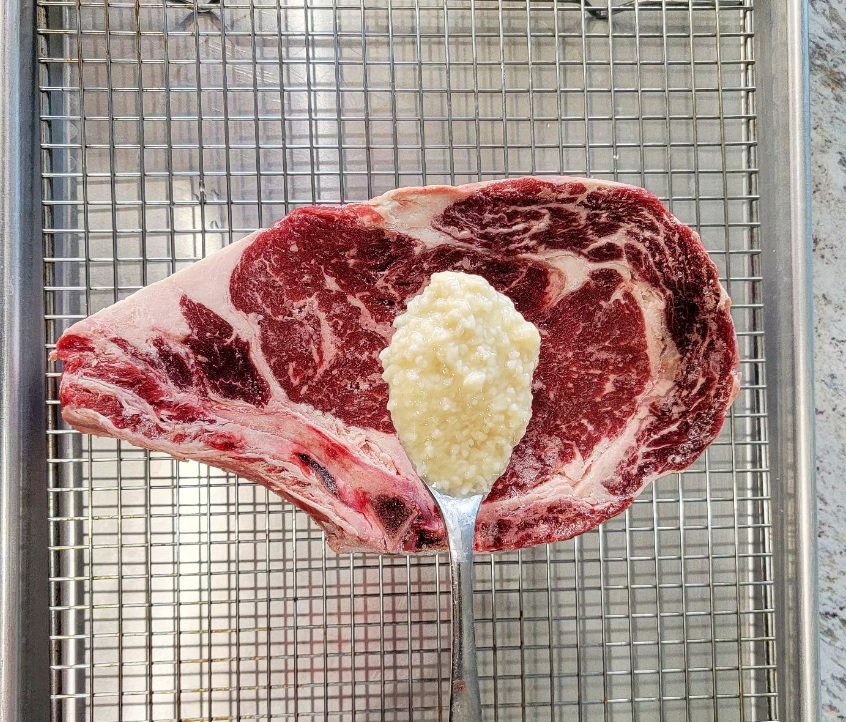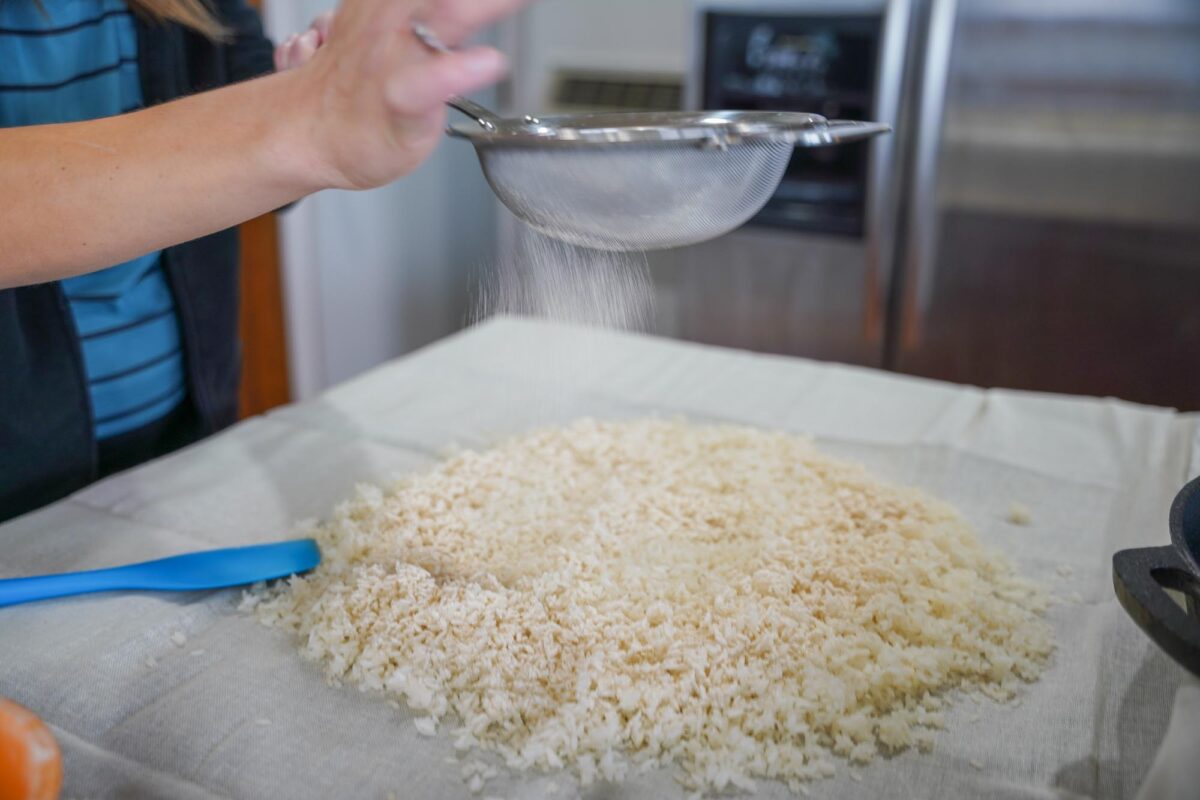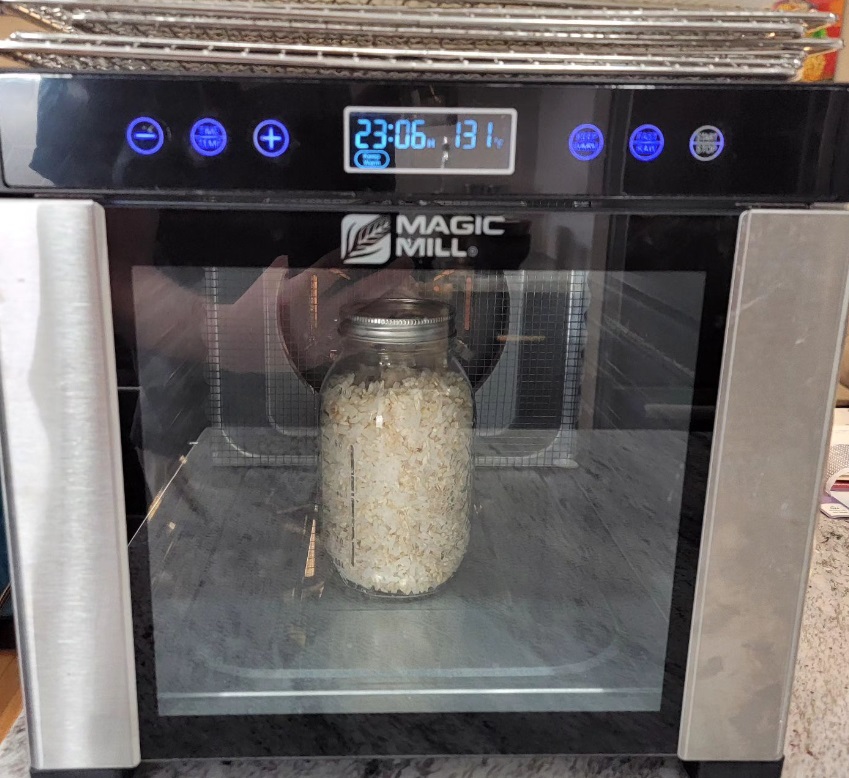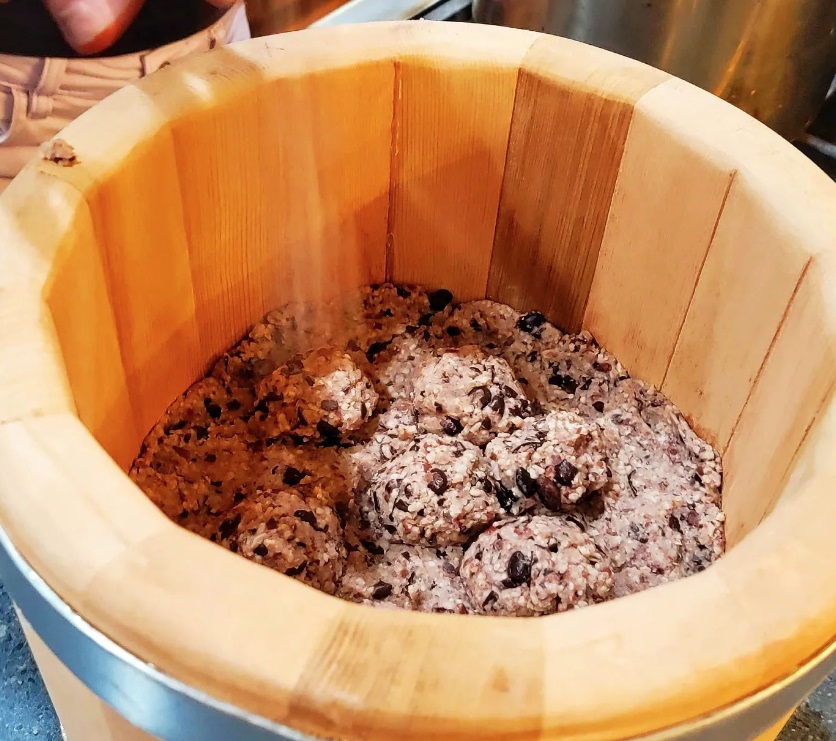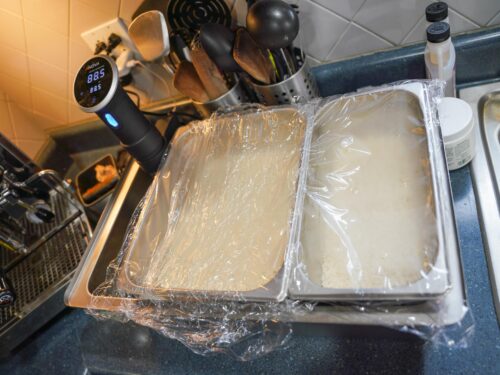Disclaimers: Our site uses demographic data, email opt-ins, display advertising, and affiliate links. Please check out our Terms and Conditions for more information.
Koji is an amazing culinary product rich in enzymes that transform food textures and flavors.
Traditionally used in Japan to make miso, sake, and myriad other traditional Japanese ferments, koji has seen a recent growth in popularity in Western kitchens, resulting in lots of creative new uses for koji.
Here we outline some traditional and not-so-traditional ways to use koji in your home kitchen, including a brief primer on what koji is and how to source it.
What is Koji?
Koji, also known as Aspergillus oryzae, is a fungus that can be cultured on rice and other grains. As koji grows on the substrate, it produces tons of enzymes, namely proteases and amylases.
Confusingly, the end product of this growth (the substrate + koji) is also called koji. In this article, we will refer to this end product as koji rice, to distinguish between the raw koji spores and the final product.
The finished koji rice product can then be used as an enzyme powerhouse in further secondary ferments. In Japan, these are typically things like miso, sake, and soy sauce. However, as we will see in this article, there are many other creative ways to use koji rice.
How to Source Koji Rice?
It's fairly easy to grow koji on rice yourself at home- check out our guide on how to make koji here for the step-by-step process. Additionally, there are several good sources online to buy koji rice directly, including Cultures for Health and Amazon.
Lastly, you can also check out your local Asian grocery stores- most of them should sell koji rice; however, prices may vary significantly.
5 Things to Do With Koji Rice
Secondary fermentations with koji rice can take anywhere from days to years, so we have ordered this list from the quickest ferments to the longest ferments. All of these start with a base of koji rice, so whether you culture some yourself or buy pre-cultured koji rice, you'll need to grab some to get going. Additional accessories required will be noted below.
Amazake
One of the quickest and easiest things to do with koji rice is to make amazake. Add one part koji rice to 2.5 parts steamed rice (cooled to 135 °F), then incubate at 135 °F for about 12 hours. As most ovens do not reach this low of a temperature, we found that the rice mixture placed inside Ball jars in our dehydrator works well for this task with all the trays removed.
You'll be amazed at the resulting product- it's so incredibly sweet, but with no added sugar. The koji breaks down the sugars in the rice, resulting in this sweet, creamy, delicious product. Not bad for a set it and forget it recipe!
How to use amazake:
- Dilute with water or milk and eat as a hot porridge for breakfast
- Add to smoothies as a sweetener
- Replace some of the liquid in baking recipes with amazake
Sake
The process for making doburoku, an unfiltered homebrewed style of sake, is pretty quick and only requires about four days. The process is a bit detailed, so we'll refer you to the recipe in Miso, Tempeh, Natto for now (if you enjoy fermented things, this book is an obligatory purchase).
The basic idea is to combine cooked rice with water and koji rice, then incubate at about 120 °F for about two days at which point yeast and lactic acid are added. Then it's fermented at cool room temperature for another two days. Much like with Amazake above, Ball jars our dehydrator is the only tool needed for this ferment.
How to use sake:
- Drink it as is, or filter if you prefer a clearer, smoother drink
- Use in all manner of marinades, stir fries, and salad dressings
Shio Koji
This is kind of a saltier, more liquid version of amazake that's ready in about one week. Add one part koji rice to two parts room temperature water, and then add 5-6% of the total weight of the mixture in salt. Stir, cover the container with a clean, breathable cloth, and let ferment at room temperature. Yes, all you need is a Ball jars and cloth for this one!
Stir once a day for the first few days. After about seven days or so it will go from not smelling like much to smelling a little funky and mesmerizing. When you deem it ready, store in the fridge indefinitely.
How to use shio koji:
- Shio koji quick pickles: chop up fresh veggies (like carrots, cucumbers, radishes, etc.) and put them in a zip-top baggie with just enough shio koji to coat. Let marinate in the fridge for a few hours to a day or two, then eat!
- Salad dressings: add a few teaspoons to your homemade salad dressings (leave the salt out at first, as shio koji will provide a lot; add additional salt to taste if needed)
- Faux dry age steaks: put your steaks on a wire rack on a sheet pan and coat each steak with shio koji all over. Place the steaks in the fridge. Flip the steaks once a day, applying more shio koji as needed if it dries out too much. After at least two days (if not closer to three), rinse off the shio koji, pat dry, and cook your steaks as you usually would. Get ready for some hauntingly delicious mushroom flavors in your steaks!
Starter Culture for Dairy Products
Add a few tablespoons to a pint of heavy cream, cover, and let set for about 36 hours; then whip to separate the butter from the whey, strain, and refrigerate the butter. The butter will have a subtle mushroom/truffle flavor!
Or make koji cheese- one of my favorite uses for koji rice. Combine equal parts koji rice and ricotta cheese plus 7% salt, cover, and refrigerate for two months. The resulting product will have the umami flavors of a hard cheese like Parmigiano Reggiano, but you'll have made it yourself!
How to use koji cultured dairy products:
- Butter: use as you would normal butter! We love it on steamed veggies and in mashed potatoes.
- Cheese: also great on steamed veggies, salad dressings, pasta sauces
Miso and Umami Pastes
These secondary ferments take a lot of patience- anywhere from several months to several years! The basic premise is to cook beans or legumes, cool to room temp, mash, and mix with salt and koji rice.
Pack in a Ball jars with a weight on top, and let ferment. If you want to get really fancy, you could get a traditional Japanese kioke, too (we have one and the flavor it brings into a miso is incredible). For a shorter ferment of about 1-2 months, use a 1:3 ratio of dry beans/legumes to koji rice and 6% salt. For a longer ferment of about one year, use a 1:1 ratio of dry beans/legumes to koji rice and 12% salt.
Basically, the higher the salt percentage, the less koji rice you need, the longer you can let it ferment, and the more complex the final flavors will be. Stay tuned for our full guide to miso and umami paste making!
How to use miso and umami pastes:
- Stir a few tablespoons into a pot of soup for added richness and complexity
- Glazed veggies: add about a tablespoon each of miso and honey to a pound of steamed or sauteed veggies
- Salad dressings: add a tablespoon to each quarter cup or so of homemade dressing
- Broiled fish: combine miso, honey, and vinegar/mirin, and brush on meaty fish like salmon before broiling on high for a few minutes
Koji rice is a truly magical ingredient with so many traditional Japanese uses. But we also love getting creative with our koji rice experiments. We hope this guide has helped your creative juices get flowing and inspired you to get fermenting with koji rice!
Do you have a favorite way to use koji rice at home? Comment below to share!
Pick Up Fermentation Gear Today
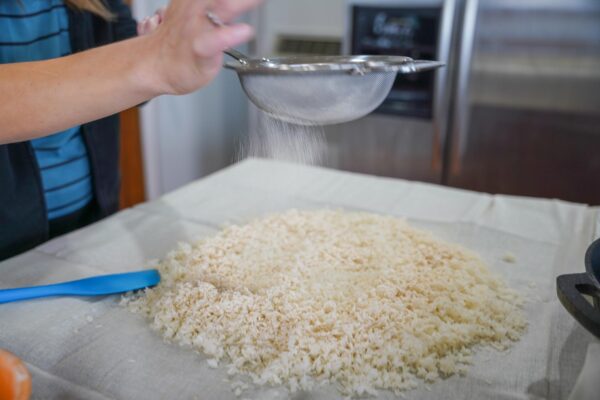
Improve your fermentation game with some great new products from Cultures for Health- a great spot for buying cultures, spores, and more!

